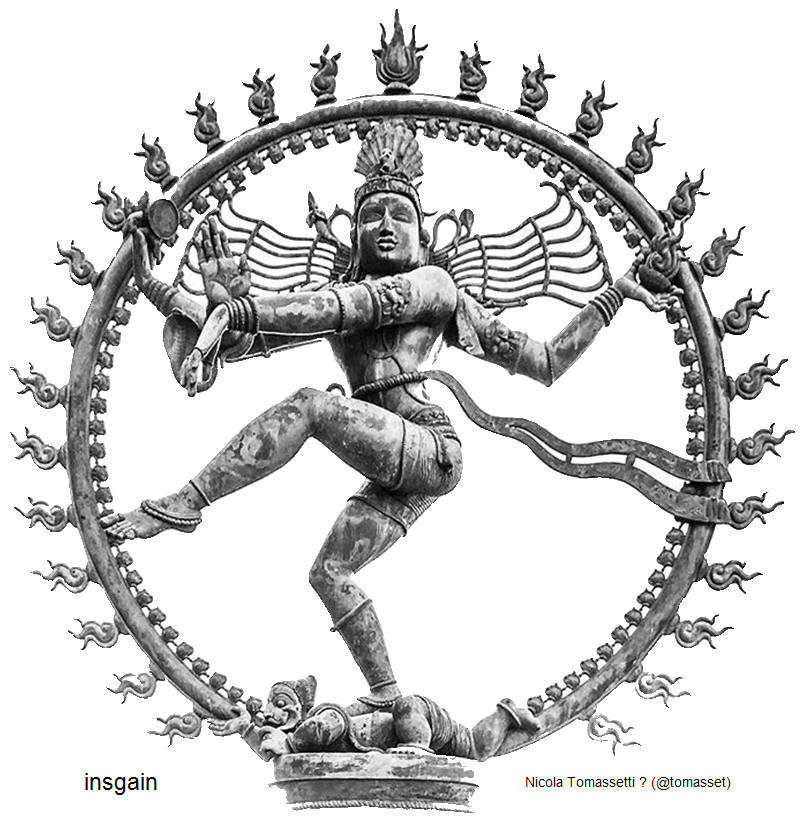Chidambaram Temple Paintings Renovations
Chidambaram-Temple-Paintings-Renovations
Chidambaram Paintings and Drawings that enthrall the mind.
Photos: S. Devarajan
• சக்தி விகடன் - 17 Jan, 2017 Issue
• திருத்தலங்கள்
Posted Date : 06:00 (Jan/03/2017)
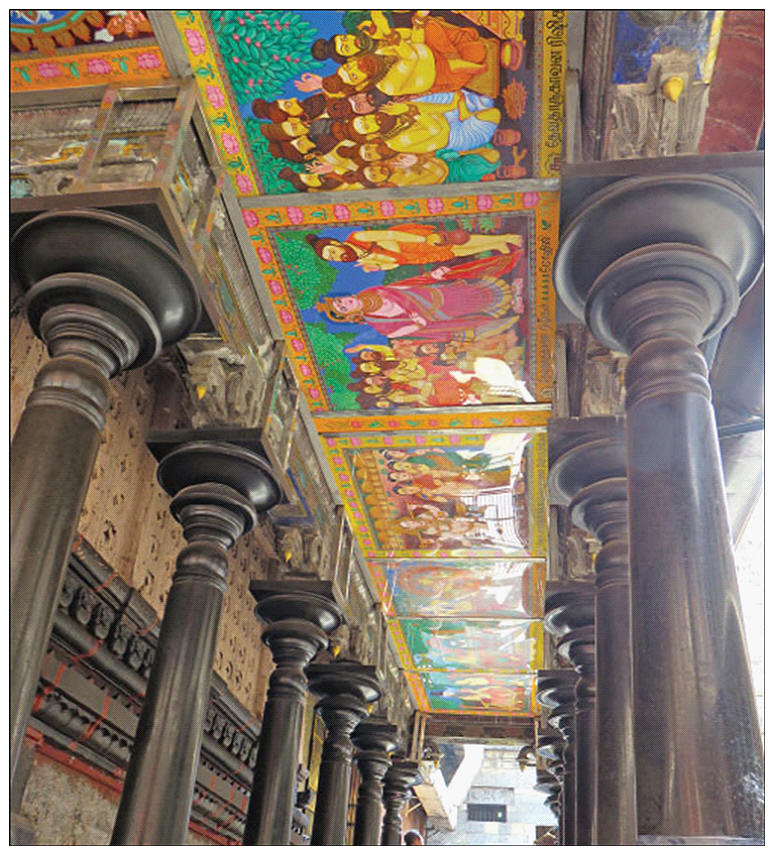
Famous historical art works, several-hundred-years old are in the 1000-pillar Mandapam (Hall), Sri Sivakami Sundari Sanctum, and Nandi Mandapam behind Nataraja’s sanctum (= Cit-Sabah = Hall of Consciousness).
A year before the Kumbabishekam (consecration), renovation of the Canopy Paintings behind Nataraja Sanctum took place. Sixteen paintings over 1000 years old depicting the ancient history of Chidambaram are among the rare paintings. These paintings originally drawn with Herbal colors were deteriorating. On the recommendation of Dikshithars, under the guidance of the most famous antique painter Silpi’s pupil Painter Padmavasan, pictures and portraits were drawn with new brightness and grandness. Mr. Padmavasan stayed in Temple grounds in Chidambaram Koil for many months, bought Kerala herbal colors and redrew on Singapore Canvas Fabric the ancient 16 paintings in living colors to last for many hundred thousands of rupees.
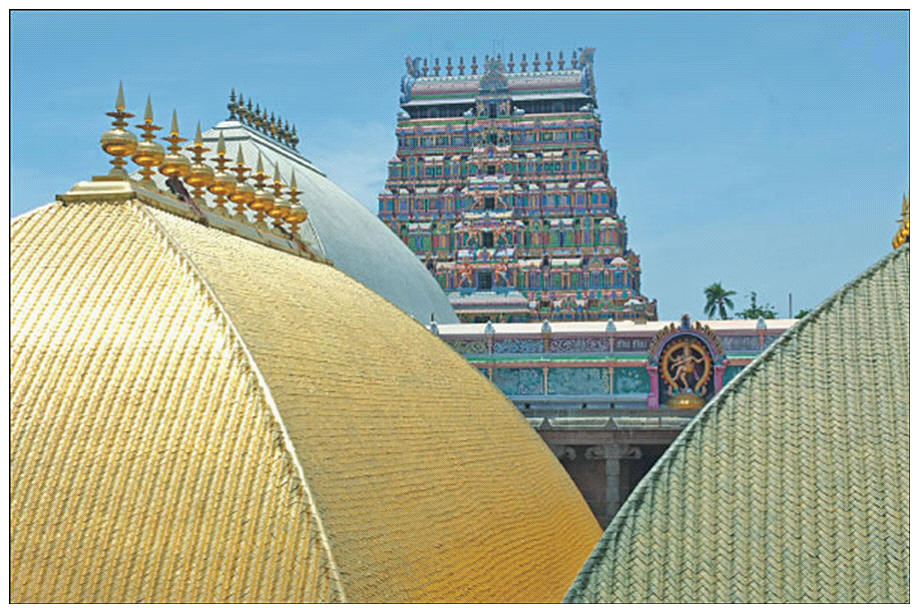
These framed paintings on fireproof plates were overlaid on the original drawings. Artist Padmavasan without compromising on the ancient grandeur of the drawings, drew paintings with natural colors with wonderful results. Annamalai University Professor Rajasomasekara Dikshithar serving as the head priest spoke to the reporter about this.
“The temple drawings were the ancient Fresco art. The paints and the colors were all natural. For example, the green color is obtained from flora.”

The drawings were over 1000 years old. They were drawn between 3rd
to 8th century. It can be asserted with certainty these
drawings were prior to 12th century.
The time of Fresco drawings as proof of the art of painting attest to
the establishment of the temple.
Around the Nataraja Sanctum, there are about over 100 drawings. They are
thematic drawings based on an idea or a story. Many temples have
drawings with natural colors of events from Ramayana. Chittanna gateway
has drawings depicting Jain religious ideas. Likewise, there are
drawings depicting the rise of Chidambaram, the story of Manickavasakar,
Saiva Samaya Kuravar, Saiva worship and practice.
The drawings in Nandi Mandapam behind Sri Nataraja Sanctum were in ruins. Renovation of paintings were done in time for the Kudamuzakku festival in May 2015 for Re.150,000.
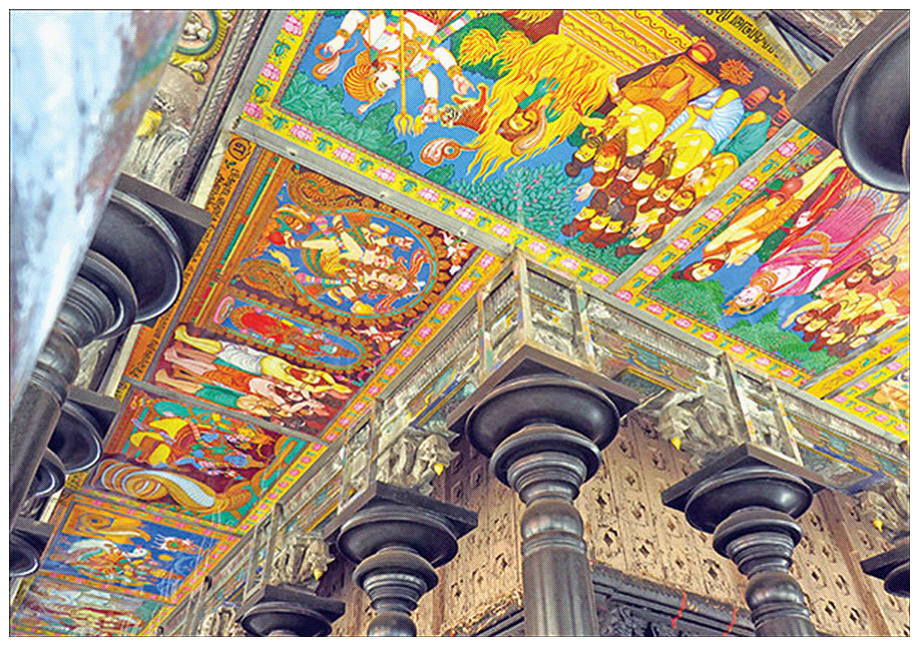
In Sri Sivakama Sundari Amman shrine, the beautiful drawings are in a state of ruination. Consecration is expected soon in that temple. We formed a committee to discuss the renovation of drawings. Preparations are in progress. Raja Somasekara Dikshithar observed, “Soon Amman Sannidhi drawings will get a new life.” He described some of the Pauranic events depicted in the drawings.
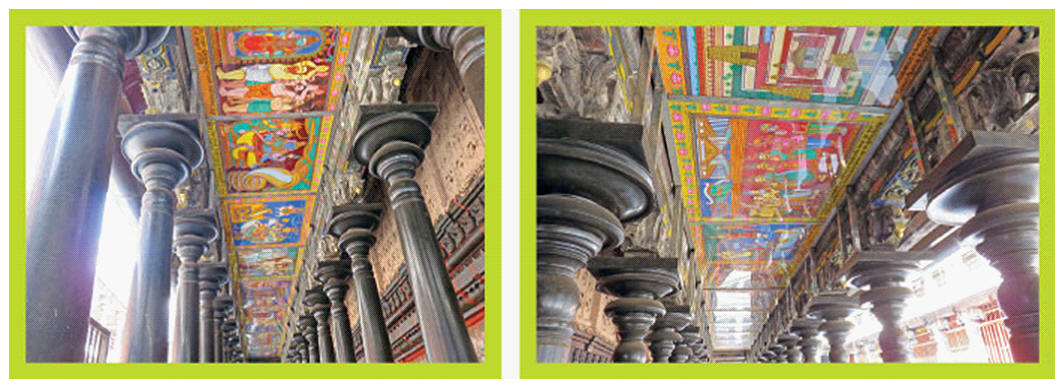
Māththiyanthaṇar
gets Vyākkirapātham = Maththiyanthanar gets tiger foot.
Chidambara Puṛāna declares Adhimula Nathar Lingam’s sacred body was the
residing deity in that place before Lord Nataraja. Māththiyanthinar
the devotee of Siva was collecting flowers in Nandavanam as ‘Pushpa
Kainkaryam’ (flower-collecting as divine service) for daily puja. Every deed has
its own Dharma. Likewise, Pushpa Kainkariyam has its Dharma.
We by ourselves should collect flowers by our hands, that too thinking of the Bhagavan. The religious duty or obligation is purity in collection and laying of the flowers on the deity. Maththiyanthinar wanted to pluck the flowers by reaching the upper branches before the honeybees step (land) on them to imbibe the honey. The flowers visited and sucked by the bees are said to have been contaminated with their saliva. Purity is lost. The right time to pluck flowers is early in the morning in Brahma Muhurtam (4:30-6AM) before the bees come in swarms to imbibe the sap. Maththiyanthanar supplicated to Siva to offer him a suitable body to climb the tree in the dark and pluck the flowers. Siva immersed in the devotion of his Bhakta made up his mind to confer on him the grace.
Siva conferred on Maththiyanthinar the tiger feet to climb the trees, sharp eyes of the tiger to see the distant flowers and an acute sense of smell as in a tiger to follow the scent of the flowers. These sensory attributes of a tiger in Mathithiyanthinar gave him the eponymous name, ‘Vyākkira pāthar (Tiger-foot)
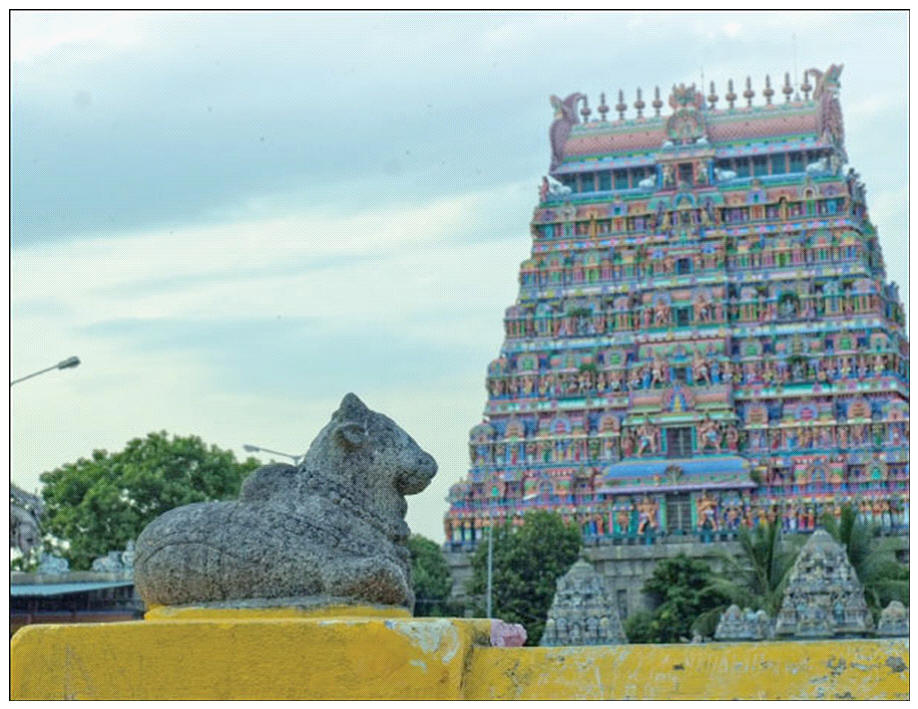
Patanjali – Ananda Tandavam (dance) because of Vyakkirapaathar.
Vyakkirapathar and Patanjali (Avatara of Serpent Sessa, the bed of Perumal in Milk Ocean) performed severe austerity in Thillaivanam (Forest of Thillai trees) to witness the Ananda Natanam in Kailas as enjoyed by Devas and Munis, and pay homage to Siva. Siva, happy at their austerity, came down from Kailas and performed Ananda Tandavam in Thaipūsam (Full moon day in mid-January to Mid-February) on a Thursday, Amirtha Siddhiyoga Virushapa Lagna.
They beseeched Siva to come down to Chidambaram for the people to receive benefits from watching the Dance of Siva as they did. They further begged Siva to appear in his Dancing Pose. Siva-Nataraja, assenting to their request, came down with 3000 Bhutha-Ganas to Chidambaram on the day of full moon in the month of Thai.
அதையே
ஆனந்தத் தாண்டவ ஓவியம் விவரிக்கிறது.
The drawing explicates the Siva Dance: Ananda Tandavam (Ecstatic
Dance of Siva).
The Inner Abider (Siva) in the human form of Pitchadanar went to Deva-Taruka-Vanam, subdued the Rishis (forest-dwelling sages), caused removal of their arrogance and self-conceit and impressed on them that soulful love and devotion only could lead them to Bhagavan. All these events were depicted in paintings here. In the month of Margazi, Thiruvathiri Dharsana festival on the 8th day (January 9, 2017) will be celebrated; the devotees can see Bhagavan Nataraja going on a procession as Pitchadanar.
Let us go to the Chidambaram Koil, the treasure of paintings and
drawings, obtain Dharsan of Ananda Tandava Murthy and attain supreme
bliss in this auspicious month.
படங்கள்: எஸ்.தேவராஜன்
Photos: S. Devarajan
Thillai’s Wonders
Devotees of Siva assert Koil means Chidambaram.
In Siva temples, Sivalingam is the primary deity. But in Chidambaram, Nataraja is the fixed Deity (மூலவர்). Chidambaram has the distinction because it is the only temple where Mūlavar (Fixed) becomes the processional deity (Uṛtsavar) twice in a year. Of the five Elemental Temples, the Sky Temple is Chidambaram. This temple offers Mukti (Liberation), upon Dharsan.
Standing on Sannidhi’s Heart Lotus (location in temple to see the deity) a devotee can see both deities at one time, left eye seeing Vishnu Perumal and right seeing Siva. This arrangement is seen nowhere else.
Nataraja’s right side presents a screen. On the rocky wall behind the screen, a Vilva garland hangs. A devotee can obtain Dharsan of two congruous discs Sri and Siva on the wall. Sri is Ambal or Sakti and Siva is the Inner Abider (இறைவன்). Above them are puṉuku and javvātu (புனுகு, ஜவ்வாது) Civet perfumes applied a long time ago, still seen now.
Five Assembly Halls grace this temple: Chit sabhā conferring Dharsan by Mūlavar, Kanaka sabhā for ritual ablutions, Deva sabhā conferring Dharsan from Siva family deities, Raja sabhā comprising 1000 pillars Hall, and Nṛitya sabhā where Nataraja and Kali presented competitive dances.
Besides the Great Halls, Chidambaram Koil has entities based on the Pentad: five deities, five-syllable steps, five processional paths…
If the Earth is shaped as Virāṭa Puruṣa, every organ of His has a temple. His heart lies in Chidambaram. That is why in the Golden Hall (பொன்னம்பலம்), Nataraja abides on the left side.
Chidambaram is the only temple without a money collection receptacle (உண்டி). Likewise, there is no queue. The temple serves morning and evening meals for 1000 persons every day. Eminence, excellence, superiority, greatness…: That is Sakasrabojan, 1000 meals.
Daily one Dikshithar performs according to injunctions ritual ablution of Chandramaulīsvarar (Spatika Lingam = Crystal Lingam) in the Golden Hall six times a day. He goes to the Hall with purity of body, mind and soul early in the morning to perform three morning ablutions of the deity and does not drink or eat for that duration. He should not leave the premises for any reason. After midday meals, three ritual ablutions take place in the evening with applicable injunctions. The Dikshithars consider it as lifelong auspicious and privileged destiny and perform the rituals.
The jewels gifted by Tippu Sultan and Ramanathapuram Raja are kept in safe and used on special occasions.
செவ்வாய், 25 மார்ச் 2008 (12:04 IST) Sakthi Vikatan
What is the importance of the Sacred Tree inside the temple.
Sthala Virutsam (Shrine Tree) means the deity self-created himself or
herself in that a place adjacent to a tree. The native tree in that
place was responsible for the appearance of Svambhu deity (self-existent
deity), who remained in place unknown and undiscovered by people. A
letdown (of milk) by kār-ām-pacu made it possible for the discovery of
Svayabhu Linga (self-existent natural Lingam). The nearby tree is the
Sthala Virutsam (Shrine tree).
காராம்பசு kār-ām-pacu. கரு-மை + ஆம் +
If a person circumambulates the tree, he will obtain the full benefits
of going around the Grbhagraham (Inner sanctuary). Only a few of the
Vedic scholars can access the inner shrine. But anyone can go around the
Shrine Tree.
A temple in Uththirakosha Mangai has an old Jujube tree (Zizyphus
jujube). KAvappuli-Kandar meditated (under the tree), received vision of
Siva and obtained a boon from him.
இலந்தை¹ ilantai , n. [K. elaci, M. ilanda.] Jujube-tree, m.
tr., Zizyphus jujuba;
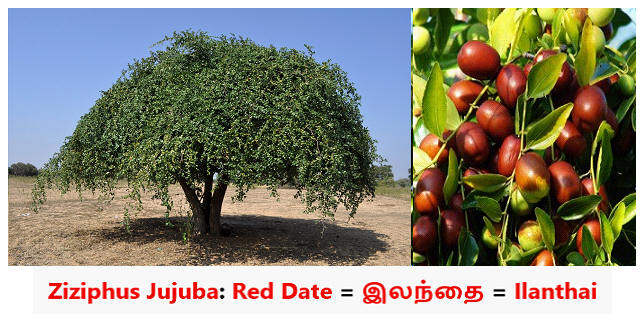
Virudhachalam Viruththakirīśvarar Temple’s sacred tree is Indian mesquite. The temple’s Vivasuththu Muni sits on the platform under the tree. Circumambulation of him is good enough.
Indian mesquite, m. tr., Prosopis spicigera.
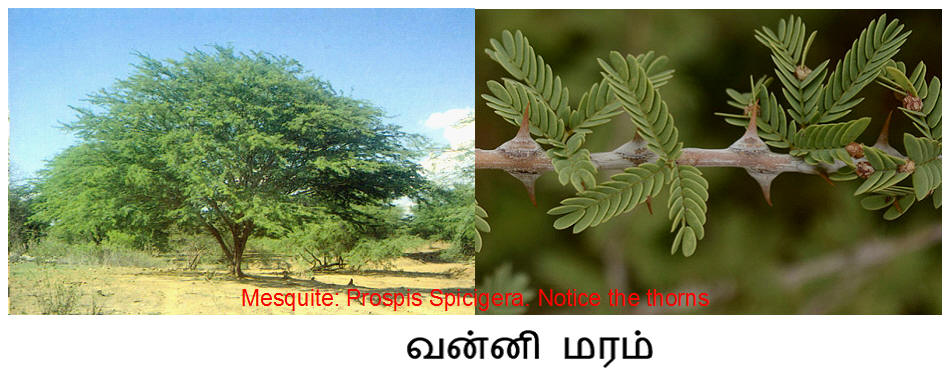
A poem states you
may antagonize Siva himself but not the grace-giving Siddha, blessed
with the grace of Siva.
Sthala Virutsam has more Sakthi than the deity.
You go around Sthala Virutsam as many times as you can. It is enough to do it once.
This is Nataraja in CERN.
